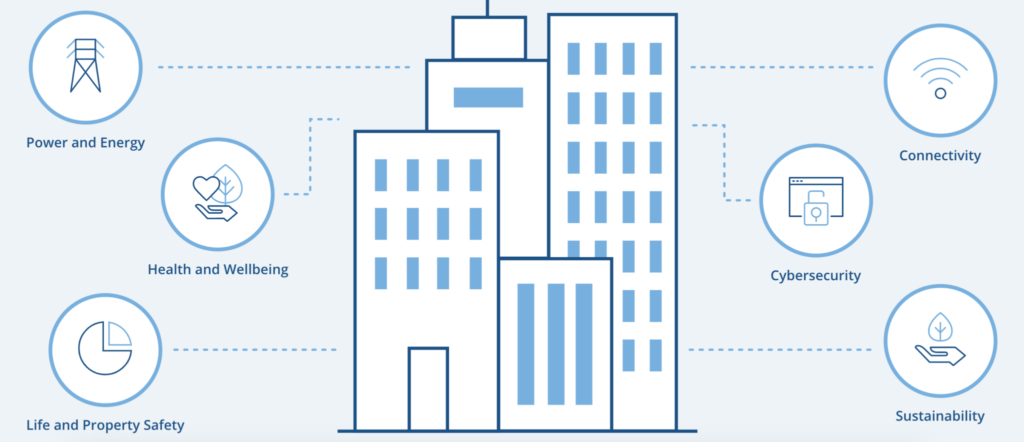Having worked in many industries over the years, I’ve become a big fan of standards bodies. Especially in new and growing marketplaces, the emergence of touchpoint standards generally helps to inspire end user confidence and expose fly-by-night operations. Sure, they can also give a cold shoulder to new and innovative market entrants, but in large part they help keep people safe and set baseline expectations.
So, I was intrigued by the new combined effort by UL and Telecommunications Industry Association to set up some standards around so-called “smart buildings.” Of course, “smart” is one of those adjectives applied to just about anything, to the point where it’s become meaningless (I, personally, like that “smart phones” are now just “devices”). So I’m all for creating some definition around what exactly makes a smart building and getting some certification efforts going.
I gotta say I was disappointed, though, to discover just how 2D the effort seems to be.
As you can see, the program is essentially a self-assessment, with an upgrade opportunity for a verified assessment by UL engineers, across six areas of your property:

And, yeah, it’s nit picky, but my first reaction was, “Look how flat that image is!” Of course, it’s just branding and an infographic, but when I look through the program, it just seems to render buildings into this lifeless list of check boxes. But people who really work with buildings know they’re almost living things! They are one of the ultimate 3D experiences, with finite space and near constant change, and, ultimately, experienced by people as they move through them.
But in this smart building program’s marketing materials, there’s no mention of a digital twin, or 3D visualization, or anything that hints at the value of reality capture and reflection.
This is actually a very nice 15-minute interview with UL CTO Tom Blewitt and Brian Davis, the marketing lead for Corning, which was among the first to use the program, and you’ll notice they do pop in a very, very quick little 3D visualization:
It’s hard to argue with the goals! I think Brian does a great job talking about making buildings work for people and integrating technology for their sake, not just for the sake of doing it (also, the contrast of Yankee and Southern accents and dialects here is delightful). But it still feels awful flat, awful focused on binary data. Where’s the discussion of understanding the space of the buildings?
Maybe it’s in the self-assessment. Maybe it’s in the details when you start diving in. I dunno. This is just a surface-level sales page. If anything, though, this is an opportunity. If reality capture industry members wanted to advocate to UL, they might focus on these pieces:
- Power and Energy: Power and energy is ultimately about consumption, and what better way to learn about consumption than doing 3D mapping of how people flow through the building, along with where and how they use power. Can the building be more smartly apportioned to keep people in certain parts of the building at certain parts of the day in order to minimize use?
- Health and Wellbeing: Not long ago, I argued for the value of 3D in mapping air flow. Having that 3D visualization would help minimize infection, regardless of the virus in the air. Heck, you could even do work on how to place coffeemakers in the best places to encourage the most amount of daily walking.
- Life and Property Safety: Everyone knows 3D visualizations of exit routes are better than flat maps that people have a hard time reading. So many safety efforts could benefit from 3D training.
I can’t really say that 3D is going to do a whole bunch for connectivity, cybersecurity, and sustainability, but I bet the creative among you could come up with something.
The larger point is this: Reality capture and digital twins need to demonstrate their value to become standard practice. Making that case to the actual standards bodies is one way to get that stamp of approval in a market-recognized manner.






